Customer Segment Guide for Business Growth and Audience Targeting
Building strong customer segments can affect everything about your business from product creation to creating a successful marketing plan.
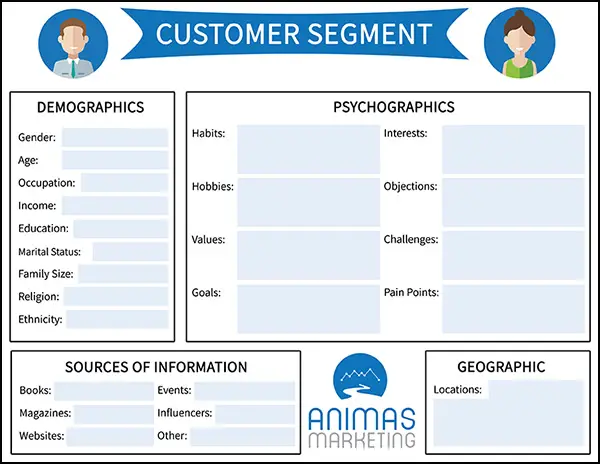
The Most Detailed Guide to Target Personas for Your Business
The issue is that most businesses simply rely on geographic and demographic attributes to build these target personas.
What they don’t know is that geographic location and demographics are only a part of the customer segmentation process.
This brings us to the missing piece of the puzzle and why most businesses cannot target their audiences correctly.
What is a Customer Segment?
Customer segmentation is the process of creating groups of customers or businesses that share common characteristics. Commonly found on the Business Model Canvas, it is too often misunderstood and finding the correct information can be a hassle.
That is why we created this detailed guide and customer segment worksheet to guide your business to success.
Download the Customer Segment Guide.
A customer segment is made of three main characteristics:
-
Geographics (Where)
-
Demographics (Who)
-
Psychographics (Why)
Also, we are going to look at consumer sources of information and how we can use these channels to reach the appropriate audiences.
An easy way to think of these three characteristics is to break it down into the Who, Where, and Why of a customer (WWW).
Before we go into specifics over the psychographics section of the customer segmentation process, let’s look at the details that go into geographic locations and demographics.
Geographic Locations
This is most likely the easiest process to understand in the customer segmentation process although there are three additional points to consider when choosing an audience location.
-
Style
-
New Territory
-
Seasonal
For example, if you are a local business based out of Steamboat Springs, Colorado, you might want to target people within a 25-mile range of the town with the possibility of surrounding towns.
Style
Let’s imagine that you sell Western Wear in this town but would like to reach out to customers online in other regions. You might want to then have a separate customer segment targeted towards locations that are more likely to purchase western wear.
In this case, the audience might include rural areas in Colorado and avoid the larger cities such as Denver. This is a perfect example of how style can be incorporated into a marketing strategy.
New Territory
For the New Territory attribute, imagine opening a new store in Dallas, Texas. Then you might want to use this opportunity to create an exclusive offer for audiences located in Dallas to increase your brand visibility rather than for all of your target markets.
Seasonal
Perhaps you own an online garden supply store. Using the seasonal attribute of the geographic location, you could decide to target different areas based on when the gardening season begins.
An extremely helpful tool to find seasonal data is Google Trends.
This example shows the trend of garden supplies over the course of a year from Colorado and Georgia. Notice how the trend in Colorado peaks during June while the Georgia trend is strongest in March.
This could encourage the garden supply store to target these locations during these specific times to obtain the best lead conversions.
Demographics
Demographics explains who your customer is and is a crucial step in the customer segmentation process.
This can include:
-
Gender
-
Age
-
Occupation
-
Income
-
Education
-
Marital Status
-
Family Size
-
Religion
-
Ethnicity
Imagine that you are a real estate agent located in Durango, Colorado, and you would like to create a target audience that would be likely to buy a new family home. Let’s look at what some of these demographic attributes could look like.
For gender, we choose both men and women as both genders could play a significant role in the home buying process.
With age, we target people aged 30-45. People under the age of 30 may not be in the financial position to buy a large home and people over the age of 45 have likely already bought their first family home.
We leave occupation empty for this example but if you owned a marketing agency, you might use this to target entrepreneurs and business owners.
The income section is set at a household income of $80,000+. Much like with age, household incomes that fall below this level may not be in the position to buy a new home.
While education is not a factor for this customer segment, it could play a significant role for businesses such as a college university or a set of online courses targeted towards an audience that never graduated a higher-education.
With marital status, we choose to target people that are married. We wouldn’t want to show singles a family home, now would we?
Next, we choose a family size of two children. To be even more specific, we might add that the family has one child with another expected in the next 6 months.
Both religion and ethnicity do not play a role in this example but can be used to define target markets where that information can be helpful.
Now, we are starting to gain a great idea of who our customer segment is. We have the geographic location and demographics to target but this is where it gets interesting.
We know the where and the who of our customer, but we do not know the why.
We want to know why a customer would make a purchase and what drives them to make the decisions they do. This is where psychographics comes into play.
Psychographics
Psychographics is the classification of people due to their interests, behaviors, attitudes, aspirations, and other psychological criteria. We have included the following categories to the psychographics sections:
-
Habits/ Lifestyle
-
Hobbies
-
Values
-
Goals
-
Interests
-
Objections
-
Challenges
-
Pain Points
Having a solid understanding of this criteria will help your business with product development, content marketing, copywriting, email marketing, and much more.
Habits/Lifestyle
Let’s look at the habits/lifestyle attribute. For the example, we will call this customer Sally. Let’s say that Sally commonly wakes up at 7:00 a.m. each day and works at the office from 8-5. Once she comes home, she checks her Facebook and spends about an hour on the platform.
This information could be used to create scheduled advertisements for your business. For this example, we could create a specific advertisement that is sent out between the hours of 7 am – 8 am and 6 pm – 7 pm.
Moving forward, we will identify the customer hobbies.
Hobbies
Let’s imagine that Sally enjoys mountain biking and fly fishing in her free time. This information could be used for content marketing and copywriting.
For mountain biking, we could create a content marketing article titled, “Best Durango Neighborhood for Mountain Biking Enthusiasts.”
With the fly fishing hobby, we could create the copywriting headline, “Riverside Properties in Durango under 500K.”
Now we can start to see just how powerful psychographics can be when creating marketing content for our audiences.
Values
When evaluating the values of the customer segment, let’s say that Sally values a calm environment and values a safe environment for her family.
For the calm environment value, we could create a copywriting headline titled, “Enjoy Piece of Mind with 500 acres on this Beautiful Mountain Home.”
With the safe environment example, we can create the content marketing article, “Find out why Durango, Colorado is one of the safest places to start a family.”
Goals
Next, let’s look at some examples for the goals section. It is worth to note that goals and values can be mixed up, but they are two different psychographic attributes.
Values are a person’s beliefs about what is important and worthy while goals are the desired results or what a person aims to obtain.
For our example, we say that Sally has the goal of finding a spacious house for her family and the goal of finding the best mortgage rate for a new home.
Here are some examples to match with each goal.
- Find a spacious house for family
- Copywriting:
- “Explore a list of the best family homes in Durango”
- Copywriting:
- Find the best mortgage rate for a new home
- Content Writing:
- “Compare the Best Mortgage Rates from multiple lenders in Durango, Colorado”
- Content Writing:
Interests
For our interest example for the customer segment, we say that Sally has an active interest in the outdoors and she is interested in amateur photography.
Here are some examples of how we could use this for marketing purposes:
- Outdoors
- Advertising Placement
- Sponsor an event held by a local outdoor retailer
- Create content for a local outdoor blog
- Advertising Placement
- Amateur Photography
- Advertising Placement
- Instagram Ads to Local Target Audience
- Advertising Placement
Objections
Why would a potential customer not buy your product/service? What objections could possibly rise in the sales process? For this example, Sally might say, “These houses are out of my budget”.
In this case, you could draft up an email with the headline, “Family Homes with Affordable Monthly Payments”.
Challenges
Think of challenges as the friction against one’s goals. Our customer segment may have the goal of finding a decent priced home or obtaining enough money to afford a down-payment.
The challenges could look something like this:
- Challenged with finding an affordable home in Durango, Colorado
- Copywriting:
- “We know how expensive homes are in Durango, Colorado. Check out these homes that are drastically below market price.”
- Copywriting:
- Challenged with having enough financed for a down-payment
- Email Marketing:
- “Need Down-Payment Assistance? We Can Help.”
- Email Marketing:
Pain Points
Finally, we arrive at the pain points of the customer. Here are two examples of pain points for Sally before her consideration of buying a new home:
- Rent is too expensive without any return on investment
- Content Marketing:
- “Top 10 Reasons Why You Should Own a Home Instead of Renting”
- Content Marketing:
- Current House is too small for the family
- Copywriting:
- “Need a Larger Home for Your Family? Find Your Perfect Family Home in Durango.”
- Copywriting:
Psychographics Bring Your Customer Segment to Life
With these examples, it is easy to see just how influential psychographic attributes can be in all forms of marketing and product development. Feel free to download the Customer Segment Worksheet to fill out in your free time.
Part 2 of the Customer Segment Guide will show you how these examples fit in the sales funnel journey and methods for gathering psychographic information through Google Analytics, surveys, interviews, focus groups, and social media.
Now It’s Your Turn
Get started building strong customer segments by downloading the free customer segment worksheet below.
Is Your Business Being Found Online?

Free Digital Marketing Report ($150 Value)
![]() Want to know how your business stacks up against the competition?
Want to know how your business stacks up against the competition?
Need Marketing Help?
If you want assistance with marketing strategies to grow your business, then let’s talk.
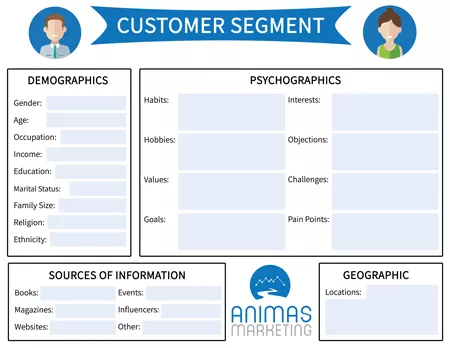
Bring in high converting customers to your business with this free resource.


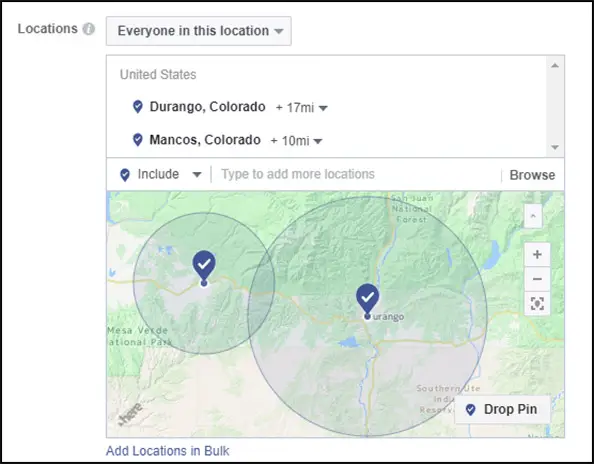
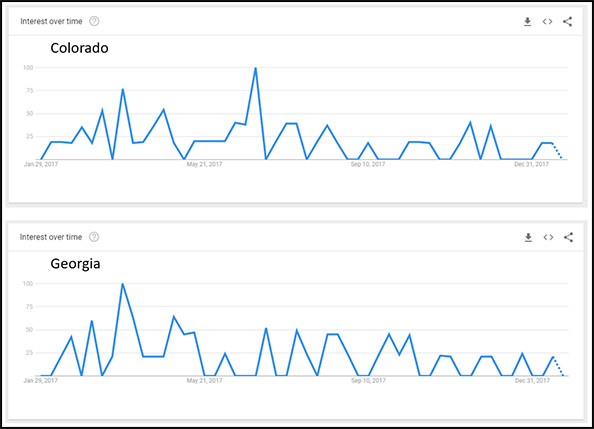

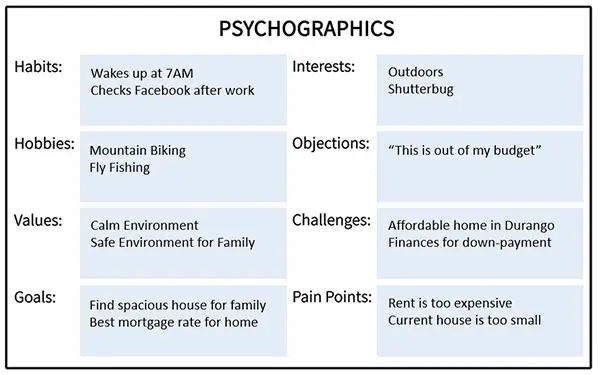







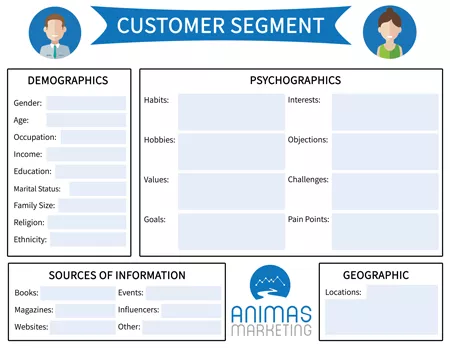
0 Comments